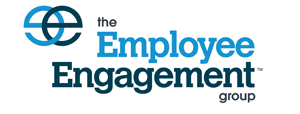By: The Employee Engagement Group

The modern workplace is undergoing a transformation, and hybrid work environments are at the forefront of this change. With employees working both remotely and in the office, organizations are presented with a unique challenge: how to sustain employee engagement in this new landscape. Let’s dive into seven effective strategies that can help organizations foster strong engagement among their hybrid workforce.
1. Communication: Bridge the Distance, Build a Connection
Clear and consistent communication is the cornerstone of engagement in hybrid work environments. Leverage a mix of communication tools to keep all employees informed and connected. Regular video conferences, team meetings, and virtual water cooler chats can help bridge the physical gap and create a sense of unity among team members.
2. Set Clear Expectations and Goals
In a hybrid work model, it’s essential to set clear expectations and goals for employees. Establish guidelines for availability, response times, and project milestones. When employees know what’s expected of them, they can focus on their tasks and contribute effectively, leading to a sense of accomplishment and engagement.
3. Foster a Virtual Team Culture
Creating a strong team culture that extends beyond physical boundaries is crucial. Organize virtual team-building activities, themed meetings, and collaborative projects that allow employees to connect on a personal level. This helps build trust and camaraderie among team members, irrespective of their work locations.
4. Recognize and Celebrate Achievements
Acknowledging employee accomplishments becomes even more important in hybrid work environments. Implement a recognition program that highlights individual and team achievements. Celebrate successes publicly, whether through video shout-outs or virtual appreciation events, ensuring that everyone’s contributions are valued.
5. Offer Flexibility and Autonomy
Flexibility is a defining feature of hybrid work environments. Empower employees to manage their work schedules and locations, allowing them to find a balance that suits their needs. Autonomy over their work fosters a sense of ownership and boosts motivation, resulting in higher engagement levels.
6. Invest in Technology for Collaboration
Seamless collaboration is key to engagement in hybrid work setups. Invest in reliable technology tools that facilitate communication, document sharing, and project management. Ensure that all employees have access to these tools and the necessary training to use them effectively.
7. Promote Well-Being and Work-Life Balance
Maintaining a work-life balance can be challenging in hybrid work environments. Encourage employees to establish boundaries between work and personal life. Offer wellness initiatives such as virtual fitness classes, mindfulness sessions, and resources for managing stress. A healthy and balanced workforce is a more engaged and productive one.
Conclusion: Navigating Engagement in the Hybrid Era
As organizations transition to hybrid work environments, sustaining employee engagement requires intentionality and adaptability. By implementing these seven strategies—effective communication, clear expectations, virtual team culture, recognition, flexibility, collaboration technology, and well-being support—you can create an engaged and cohesive workforce that thrives in both remote and in-office settings.
Remember that each organization’s hybrid journey is unique, and it’s essential to tailor these strategies to your company’s culture and values. With the right approach, hybrid work can become an opportunity to redefine engagement, collaboration, and success in the evolving world of work.



